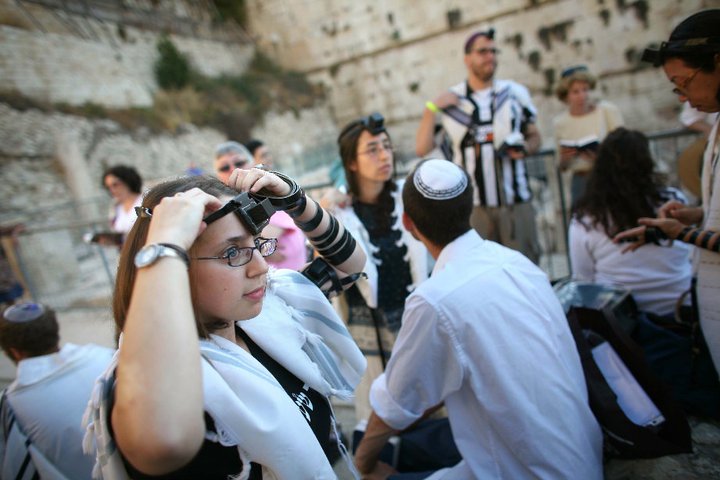
Last week was New Voices’ #GenderWeek, and many of us (including yours truly) chose to write about the gendering of Jewish ritual, as well as the need to de-gender — or create a new paradigm for— ritual and gender performances.
At the same time, however, part of what draws me to rituals seen as traditionally “feminine” is that they were the ones I felt excluded from as a child because they were “not what men did.” Meanwhile, as the young, effeminate, and staggeringly unathletic boy I was, I was always jealous of my female friends in first grade who were given candlesticks to light candles every Friday night, while I was given (yet another) set of tzitzit to wear every day.
Part of what makes the experience so powerful for me, as a man, to embrace rituals like immersing in the mikveh (although, as some pointed out to me, this is something that many men in certain Hasidic sects do regularly) and lighting Shabbat candles is specifically the fact that I am finding ways to engage myself ritually and spiritually in ways that I had not before.
It was the same when, in high school, I made the decision to permanently stop saying the blessing of “she-lo ‘asani ishah,” wherein many Orthodox men thank God for not having made them a woman, and instead began reciting “she-‘asani kirzono,” “Blessed is God Who made me as I am,” the blessing that women traditionally said. I chose to say it not just because I felt it to be more a reflection of my beliefs as a feminist and that apologia for the blessing — that it is a reminder to check my privilege as a male — simply didn’t cut it. On a deeper level, however, one of the reasons I chose to recite this blessing is because I felt it engaged me in a fuller, more honest way.
That’s not to say that I have given up on what have been traditionally “masculine” rituals: I still don a tallit and lay tefillin in the mornings when I pray, and still wear a kippah — and as someone who has taken these rituals on and dropped them intermittently in the past, this, too, is deeply connected to the fact that I am doing these things not just as a Jew, but as a man.
Which is why, in some ways, the call to de-gender ritual and to create a new paradigm for what is considered masculine and feminine scares me a little: some of the rituals I have taken on are powerful to me specifically because I am a man who finds meaning in what has been traditionally done by women. And causing such a major shift in what we perceive as acceptably “masculine” and “feminine” would, in effect, erase the powerful experience of taking on those rituals which had been traditionally not for me.
And this part of a larger paradox: those of us who fight for equality or egalitarianism are fighting so that unrepresented identities will, eventually, no longer matter. Part of why coming out is so powerful is specifically because it destroys a paradigm that has been established; part of why queering ritual is so powerful for me is because it isn’t something that is normally done. Egalitarianism is about erasing (or at the very least narrowing) the boundaries between genders, but it also erases the powerful spiritual experiences that can result from transgressing those boundaries.
That is not to say, of course, that I am willing to give up egalitarianism as an integral part of my Jewish identity. It is to say, however, that I acknowledge that part of the reason I believe in egalitarianism is because it destroys the gendered aspects of the ritual of lighting Shabbat candles, even if only a little bit.
Amram Altzman is a student at List College.

